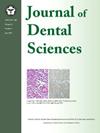Diagnostic approach for the rare anterior variant of mandibular bone depression often misdiagnosed as tumorous lesions
IF 3.4
3区 医学
Q1 DENTISTRY, ORAL SURGERY & MEDICINE
引用次数: 0
Abstract
Background/purpose
This study analyzed the clinical and imaging features of lingual mandibular bone depression (LMBD) in the anterior mandible, aiming to prevent misdiagnosis and unnecessary surgical procedures.
Materials and methods
The patients who visited a university dental hospital for painless radiolucency in the anterior mandible from January 2010 to December 2022 were retrospectively reviewed. Twelve cases of LMBD in the anterior mandible that are confirmed by biopsy or long-term follow-up were identified. Two oral and maxillofacial radiologists evaluated the imaging features. Additionally, 12 cases were manually collected from case reports published between 2001 and 2022. Clinical and histopathologic data were obtained from both groups and clinical information were compared using Fisher's exact test.
Results
The clinical information of the patients and that from the case reports showed no statistically significant differences, except for the clinical impression (P = 0.005). The imaging features of anterior LMBD included the absence of lingual cortical expansion and soft tissue bulging, a mostly round cortical border, and muscle-level attenuation, as observed on multidetector computed tomography (MDCT). Occasionally, the progression of LMBD led to thinning of the labial cortex.
Conclusion
If non-specific clinical features are present, MDCT is recommended to distinguish anterior LMBD from tumorous lesions that require surgical intervention.
经常被误诊为肿瘤病变的罕见下颌骨骨凹陷前部变异的诊断方法
背景/目的分析下颌前颌骨舌骨凹陷(LMBD)的临床及影像学特点,避免误诊及不必要的手术治疗。材料与方法回顾性分析2010年1月至2022年12月在某大学牙科医院接受前下颌无痛放射治疗的患者。本文对12例经活检或长期随访证实的前下颌骨LMBD进行了分析。两名口腔颌面放射科医师评估影像学特征。此外,从2001年至2022年期间发表的病例报告中手动收集了12例病例。两组患者的临床和组织病理资料采用Fisher精确检验进行比较。结果除临床印象差异(P = 0.005)外,患者临床资料与病例报告差异无统计学意义。前路LMBD的影像学特征包括:多探测器计算机断层扫描(MDCT)观察到舌皮质无扩张,软组织膨出,皮质边界多为圆形,肌肉层衰减。偶尔,LMBD的进展会导致唇皮层变薄。结论如果存在非特异性临床特征,建议使用MDCT来区分前路LMBD和需要手术干预的肿瘤病变。
本文章由计算机程序翻译,如有差异,请以英文原文为准。
求助全文
约1分钟内获得全文
求助全文
来源期刊

Journal of Dental Sciences
医学-牙科与口腔外科
CiteScore
5.10
自引率
14.30%
发文量
348
审稿时长
6 days
期刊介绍:
he Journal of Dental Sciences (JDS), published quarterly, is the official and open access publication of the Association for Dental Sciences of the Republic of China (ADS-ROC). The precedent journal of the JDS is the Chinese Dental Journal (CDJ) which had already been covered by MEDLINE in 1988. As the CDJ continued to prove its importance in the region, the ADS-ROC decided to move to the international community by publishing an English journal. Hence, the birth of the JDS in 2006. The JDS is indexed in the SCI Expanded since 2008. It is also indexed in Scopus, and EMCare, ScienceDirect, SIIC Data Bases.
The topics covered by the JDS include all fields of basic and clinical dentistry. Some manuscripts focusing on the study of certain endemic diseases such as dental caries and periodontal diseases in particular regions of any country as well as oral pre-cancers, oral cancers, and oral submucous fibrosis related to betel nut chewing habit are also considered for publication. Besides, the JDS also publishes articles about the efficacy of a new treatment modality on oral verrucous hyperplasia or early oral squamous cell carcinoma.
 求助内容:
求助内容: 应助结果提醒方式:
应助结果提醒方式:


